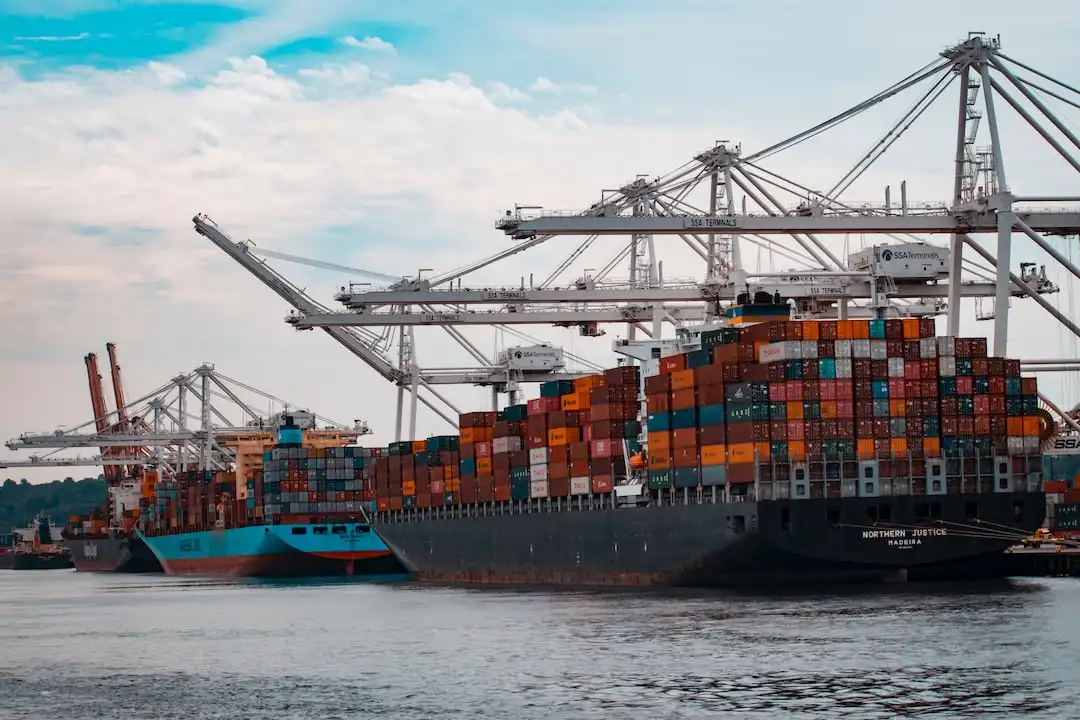In the fast-paced world of business, it’s essential to have a solid understanding of the competitive forces that shape industries.
This is where Porter’s Five Forces comes into play.
Porter’s Five Forces is a framework for analyzing the competitive forces in an industry. Developed by Harvard Business School professor Michael E. Porter, it helps businesses identify the strengths and weaknesses of their position within the industry and make strategic decisions. The five forces are:
- Threat of new entrants
- Bargaining power of buyers
- Bargaining power of suppliers
- Threat of substitute products or services
- Rivalry among existing firms

This framework provides a comprehensive analysis of an industry’s attractiveness, helping businesses make informed decisions about entry, exit, and competitive strategies.
By understanding the dynamics of these five forces, businesses can develop robust strategies to thrive in their respective industries.
In this article, we’ll delve into the intricacies of Porter’s Five Forces, offering a detailed explanation of each force and providing real-world examples to help you grasp the concepts more effectively.
Let’s get started!
Understanding Porter’s Five Forces

Porter’s Five Forces is a strategic management framework that allows you to analyze the competitive dynamics of an industry and the attractiveness of entering that industry.
It was developed by Harvard Business School professor Michael E. Porter in 1979 and has since become a widely used tool in business strategy.
The Five Forces model focuses on five specific areas of an industry, which collectively determine its attractiveness and profitability. By understanding these forces, businesses can make more informed decisions about their strategies and operations.
The five forces are as follows:
- Threat of new entrants
- Bargaining power of buyers
- Bargaining power of suppliers
- Threat of substitute products or services
- Rivalry among existing firms
Each of these forces can have a significant impact on the competitive environment within an industry. By assessing these forces, businesses can identify potential risks and opportunities, enabling them to develop more effective strategies for success.
1) Threat of New Entrants

The first of Porter’s Five Forces is the threat of new entrants, which refers to the likelihood of new competitors entering the industry and increasing competition.
This force is influenced by several factors, including:
Barriers to entry: High barriers, such as high capital requirements or government regulations, can discourage new competitors from entering the market.
Economies of scale: Existing companies may have cost advantages due to their size, making it difficult for new entrants to compete on price.
Brand loyalty: Established brands with loyal customer bases can make it challenging for new entrants to attract customers.
Access to distribution channels: Limited access to distribution networks can hinder new competitors from reaching customers.
Switching costs: High switching costs for customers can make it difficult for new entrants to gain market share.
To assess the threat of new entrants, businesses should consider these factors and evaluate the likelihood of new competitors entering the market.
2) Bargaining Power of Buyers

The second force is the bargaining power of buyers, which refers to the ability of customers to influence prices and terms. This force is influenced by several factors, including:
Concentration of buyers: When a small number of buyers control a large portion of the market, they may have more negotiating power.
Price sensitivity: Buyers with low price sensitivity may have more influence on pricing.
Switching costs: High switching costs for buyers can give suppliers more power.
Information availability: Buyers with access to more information about products and prices may have more bargaining power.
To assess the bargaining power of buyers, businesses should consider these factors and evaluate the extent to which customers can influence prices and terms.
3) Bargaining Power of Suppliers

The third force is the bargaining power of suppliers, which refers to the ability of suppliers to influence prices, quality, or terms.
This force is influenced by several factors, including:
Concentration of suppliers: When a small number of suppliers control a large portion of the market, they may have more negotiating power.
Switching costs: High switching costs for businesses can give suppliers more power.
Unique products or services: Suppliers with unique or specialized offerings may have more power.
Importance of the supplier’s input: If a supplier’s input is critical to a business, they may have more power.
To assess the bargaining power of suppliers, businesses should consider these factors and evaluate the extent to which suppliers can influence prices, quality, or terms.
4) Threat of Substitute Products or Services

The fourth force is the threat of substitute products or services, which refers to the likelihood of customers switching to alternatives.
This force is influenced by several factors, including:
Price-performance trade-offs: The relative value of substitutes compared to the industry’s products.
Switching costs: The costs, in time or money, for customers to switch to substitutes.
Perceived differences: The extent to which customers view substitutes as different or similar to the industry’s products.
Availability: The ease with which customers can access substitutes.
To assess the threat of substitutes, businesses should consider these factors and evaluate the likelihood of customers switching to alternatives.
5) Rivalry Among Existing Firms

The fifth force is the rivalry among existing firms, which refers to the intensity of competition between companies in the industry.
This force is influenced by several factors, including:
Number of competitors: More competitors can lead to higher rivalry.
Industry growth: Slow industry growth can lead to higher rivalry as firms compete for market share.
Product differentiation: The extent to which products or services are perceived as different.
Exit barriers: High exit barriers, such as high fixed costs, can lead to higher rivalry.
To assess the rivalry among existing firms, businesses should consider these factors and evaluate the intensity of competition within the industry.
By considering each of these forces, businesses can gain a comprehensive understanding of the competitive dynamics in their industry and make more informed decisions about their strategies and operations.
Now, lets have a look at the benefits of this model and why you would consider using it.
Benefits of Using Porter’s Five Forces

Some of the key benefits include:
1) Identifying Potential Threats and Opportunities
By analyzing the five forces, businesses can identify potential threats to their profitability and opportunities for growth.
For example, understanding the threat of new entrants can help a company anticipate and prepare for increased competition, while assessing the bargaining power of buyers can reveal opportunities to improve customer relationships and loyalty.
2) Developing Effective Strategies
Porter’s Five Forces analysis provides a solid foundation for developing effective strategies. Businesses can use the insights gained from this analysis to create strategies that capitalize on their strengths and mitigate their weaknesses.
For instance, a company with strong supplier bargaining power may focus on building long-term partnerships with key suppliers, while a business facing intense rivalry among existing firms may prioritize product differentiation and innovation.
3) Anticipating Changes in the Competitive Landscape
The five forces framework enables businesses to anticipate changes in the competitive landscape. By regularly revisiting their analysis, companies can stay ahead of industry shifts and adjust their strategies accordingly.
For instance, if a new technology emerges as a substitute for existing products, a company can proactively respond by investing in research and development to stay competitive.
4) Enhancing Decision-Making
Porter’s Five Forces helps businesses make more informed decisions. When managers have a clear understanding of the competitive forces at play, they can make better choices about resource allocation, pricing strategies, and expansion plans.
For example, a company facing a high threat of new entrants may decide to invest in building a strong brand and customer loyalty to deter potential competitors.
5) Improving Industry Positioning
By analyzing the five forces, businesses can improve their positioning within their industry. This framework provides a roadmap for understanding where a company stands in relation to its competitors and what actions it can take to strengthen its position.
For example, a company with low supplier bargaining power may seek to diversify its supplier base to reduce risk and increase flexibility.
Overall, Porter’s Five Forces is a valuable tool for businesses seeking to understand and navigate the complexities of their industry.
By using this framework, companies can identify threats and opportunities, develop effective strategies, anticipate changes, enhance decision-making, and improve their industry positioning.
Now let’s check out some real-world examples.

Porter’s Five Forces Examples
In this section, we’ll provide real-world examples to help you understand Porter’s Five Forces more effectively.
1) Example of Threat of New Entrants

The airline industry is a classic example of an industry with high barriers to entry, making the threat of new entrants relatively low.
Barriers to Entry:
Economies of scale: Airlines benefit from significant economies of scale, as larger companies can spread their fixed costs over a larger number of flights and passengers. This creates a cost advantage that new entrants find difficult to match.
High capital requirements: The airline industry demands substantial investments in aircraft, maintenance facilities, and infrastructure. This financial barrier makes it challenging for new companies to enter the market.
Regulatory hurdles: They are subject to strict regulations related to safety, security, and international agreements. Complying with these regulations requires time, resources, and expertise, which acts as a barrier for new entrants.
2) Example of Bargaining Power of Buyers

The retail industry is an example where the bargaining power of buyers can significantly influence companies.
Concentration of Buyers:
In the retail industry, large chains or “big-box” stores often have significant buying power due to their size and ability to negotiate lower prices with suppliers. This concentration of buyers gives them more influence over pricing and terms compared to smaller retailers.
Price sensitivity: Retail customers are often price-sensitive and have many options to choose from. As a result, they can quickly switch between retailers to find the best deals, putting pressure on companies to offer competitive prices.
Information availability: The rise of e-commerce and online price comparison tools has made it easier for retail customers to access information about products and prices. This transparency gives buyers more power to make informed purchasing decisions and demand better deals from retailers.
3) Example of Bargaining Power of Suppliers

The automotive industry is an example where the bargaining power of suppliers can significantly impact companies.
Concentration of Suppliers:
The industry relies on a vast network of suppliers, from raw materials to components and specialized technologies. Some suppliers are highly concentrated, providing critical parts or materials that are unique or have limited substitutes.
Importance of the supplier’s input: Certain suppliers provide key components or technologies that are essential for a vehicle’s performance, safety, or emissions compliance. As a result, automakers depend on these suppliers and have limited alternatives, giving the suppliers more power in negotiations.
Switching costs: Changing suppliers in the automotive industry can be costly and time-consuming. It often requires re-engineering parts, testing, and validation processes, which can disrupt production and increase expenses. This creates a barrier for automakers to switch to alternative suppliers and gives the existing suppliers more bargaining power.
4) Example of Threat of Substitute Products or Services

The smartphone industry is an example where the threat of substitute products can influence companies.
Price-Performance Trade-Offs:
Smartphones face competition from various substitute products, such as tablets, laptops, and wearable devices. These substitutes offer different form factors and functionalities that can meet consumers’ needs, potentially replacing some smartphone usage.
Availability: The increasing availability of substitute products and technologies contributes to the threat. For example, advancements in tablet and laptop capabilities have made them more suitable for certain tasks, reducing the need for a smartphone.
Price sensitivity: As consumers become more price-sensitive and seek value for their money, they may consider substitute products that offer a better price-performance trade-off. This can impact the demand for smartphones, especially in markets where substitute products are more affordable or better suited to local needs.
5) Example of Rivalry Among Existing Firms

The Lastly, let’s look at the fast-food industry where there is an abundance of rivalry.
Number of Competitors:
The fast-food industry has numerous well-established players, such as McDonald’s, Burger King, and Wendy’s, along with many regional and local chains. The large number of competitors intensifies the rivalry as companies vie for market share and customer loyalty.
Industry Growth: The fast-food industry is characterized by slow growth, which further fuels competition among existing firms. With limited opportunities for expansion, companies focus on gaining market share from competitors, leading to aggressive marketing, pricing, and product innovation strategies.
Product Differentiation: To stand out in a crowded market, fast-food chains emphasize product differentiation. They offer unique menu items, promotions, and branding to attract customers and create a competitive edge. This focus on differentiation contributes to the rivalry among existing firms.
The above examples demonstrate how Porter’s Five Forces can be applied to various industries, providing a framework for analyzing the competitive dynamics and strategic challenges, but what the limitations?
Limitations and Criticisms of Porter’s Five Forces

Now it’s time we pick things apart a little, it can’t all be good, right?
In this section, we’ll explore some of the key criticisms and limitations of the model, helping you to better understand its applicability and potential shortcomings.
1) Industry Definitions and Scope: One of the main criticisms of Porter’s Five Forces is the challenge of defining industry boundaries. The model assumes that industries can be clearly delineated, but in reality, many industries overlap or are influenced by external factors. This can make it difficult to apply the framework accurately.
2) Static Analysis: The Five Forces model is a static analysis tool, focusing on the current state of an industry. Critics argue that it does not account for dynamic changes, such as technological advancements or shifts in consumer preferences, which can significantly impact industry competitiveness.
3) Focus on Large Companies: Some critics argue that the model is more applicable to large, established companies and may not be as relevant for smaller businesses or startups. The emphasis on economies of scale and barriers to entry may not fully capture the dynamics of emerging industries.
4) Limited Strategic Guidance: While the Five Forces model can provide a snapshot of an industry’s competitive landscape, it may offer limited strategic guidance. Critics argue that it does not provide clear recommendations for how a company should respond to the identified forces or how to prioritize strategic actions.
5) Lack of Quantitative Analysis: The Five Forces model is primarily qualitative in nature, relying on subjective assessments of industry forces. Critics argue that this can lead to a lack of precision and objectivity, making it challenging to compare industries or make data-driven decisions.
6) Overemphasis on Competition: Some critics argue that the model places too much emphasis on competition and may not fully account for other factors that influence industry dynamics, such as collaboration, innovation, or regulatory changes.
While Porter’s Five Forces is a widely used and respected framework, it is essential to recognize its limitations and consider these criticisms when applying the model.
Well, I hope you have a good idea of The FIve Forces, let’s wrap things up.
If you learn better by watching video, HBR explains things beautifully in the video below:
Final Thoughts

As you now know, Porter’s Five Forces is a powerful tool that can help businesses navigate the complexities of their industry. By analyzing the competitive forces at play, companies can gain valuable insights into their market position and make informed decisions about their strategies and operations.
This article has provided a comprehensive overview of the Five Forces model, from its fundamental concepts to its real-world applications. We’ve explored the five forces — the threat of new entrants, the bargaining power of buyers and suppliers, the threat of substitute products or services, and the rivalry among existing firms — and examined how they shape the competitive landscape of industries.
Are you ready to jump in and use The Five Forces to analyse your business? C’mon, I know you want to.
Frequently Asked Questions

What is the main purpose of Porter’s Five Forces?
Porter’s Five Forces is a strategic framework that aims to analyze the competitive dynamics of an industry. It focuses on five specific forces — the threat of new entrants, the bargaining power of buyers and suppliers, the threat of substitute products or services, and the rivalry among existing firms — to help businesses understand the factors that shape their industry’s profitability.
How to apply Porter’s Five Forces in an industry analysis?
To apply Porter’s Five Forces, you should identify and analyze the five forces — the threat of new entrants, the bargaining power of buyers and suppliers, the threat of substitute products or services, and the rivalry among existing firms — that influence your industry. This analysis can help you gain insights into your industry’s competitive landscape, identify potential risks and opportunities, and make informed strategic decisions.
What are the benefits of using Porter’s Five Forces in business strategy?
Porter’s Five Forces offers several benefits for businesses:
It helps you understand your industry’s competitive dynamics.
It provides a structured approach to analyzing your industry.
It identifies potential risks and opportunities for your business.
It helps you make informed strategic decisions.
What are some examples of Porter’s Five Forces in action?
The airline industry demonstrates the high barriers to entry and intense rivalry among existing firms.
The retail industry shows the significant bargaining power of buyers due to price sensitivity and the concentration of large retailers.
The automotive industry exhibits the strong bargaining power of suppliers for critical components and the high barriers to entry due to economies of scale and capital requirements.
What are the limitations of Porter’s Five Forces?
Porter’s Five Forces has some limitations:
It provides a static analysis of an industry and may not account for dynamic changes.
It may be more applicable to larger, established companies and may not fully capture the dynamics of emerging industries.
It does not offer clear strategic guidance or prioritize actions.
It relies on qualitative assessments and may lack precision.
How does Porter’s Five Forces compare to other strategic frameworks?
Porter’s Five Forces is one of several strategic frameworks used in business analysis. It focuses on analyzing the competitive forces within an industry. Other frameworks, such as SWOT analysis, PESTLE analysis, and the BCG matrix, may offer a broader perspective by considering internal and external factors, as well as market growth and share.
When comparing frameworks, it’s important to choose the one that best fits your specific analysis needs and objectives. Often, combining multiple frameworks can provide a more comprehensive understanding of your business environment.










